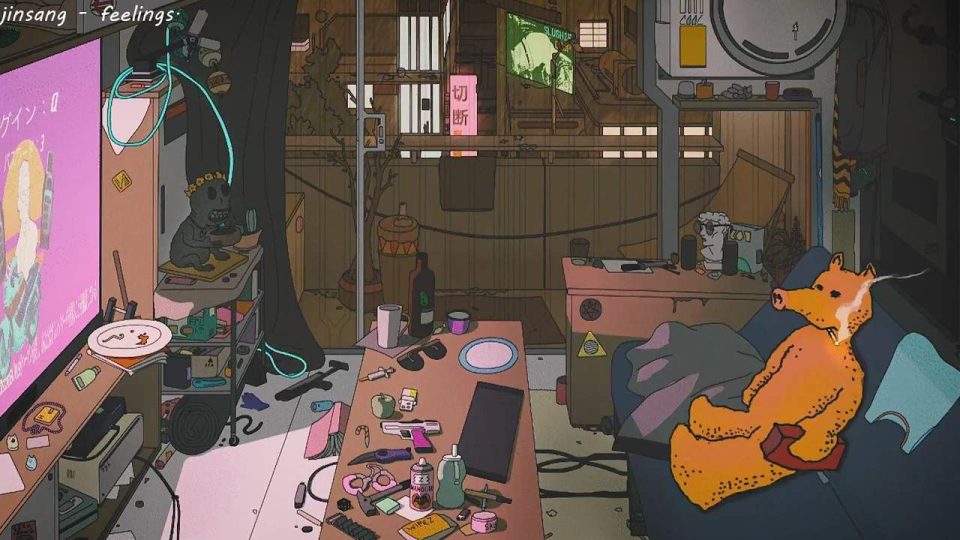How to make a lofi hip-hop beat
So, you’re ready to get your fingers dusty and try your hand at some lofi Hip-Hop beats. In this article, we will be taking you through the key principles involved in producing lofi hip-hop beats.
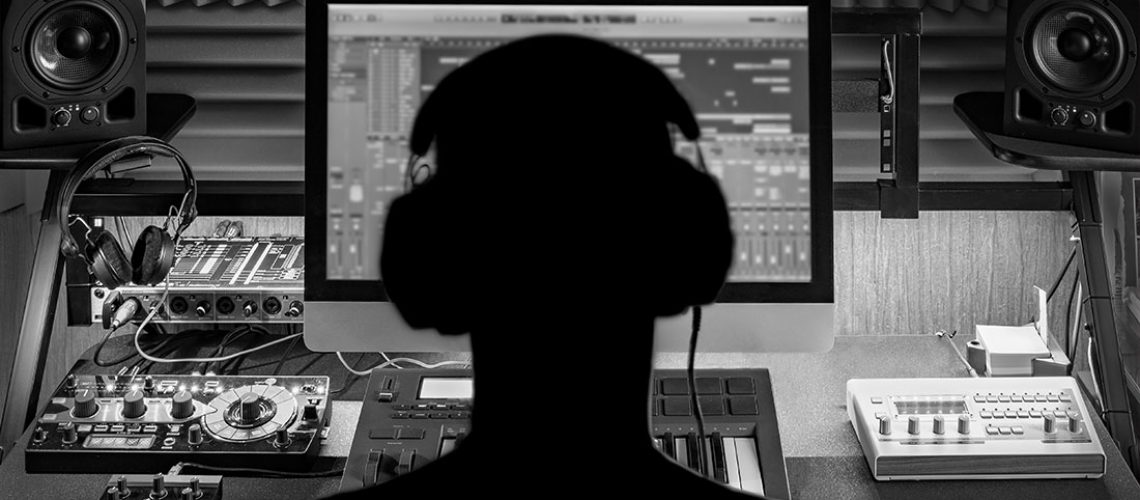
Getting Started
Firstly it’s worth considering what compositional approach you will be taking. Will you be writing the music from scratch, using samples or maybe a combination of the two? Using samples and loops may be the quicker and easier option. If however, you can compose your own melodies and program your own drums then this will give you full control over your lofi destiny.
Like most music creation, there is no one size fits all solution for lofi production. So for the purpose of this piece, I will focus firstly on making lofi using samples and then composing lofi beats from scratch.
I will also stress at this point that the advice I am giving is based on how I would approach lofi production. There are of course many different approaches and all, well almost all, are valid.
Approach #1: Samples
One thing’s for sure, you’re not going to be short of choice when it comes to lofi samples. Lofi melodic elements are generally organic in nature. Expertly prepared samples played by skilled musicians can therefore prove invaluable. Of course, what you do with your samples is entirely up to you. Some producers happily loop and layer lofi samples while others prefer to chop and flip them.
First, we have to dig in the ‘metaphorical’ crates and source some lofi gold to sample. This is where your ear and musical taste becomes your guiding force. It’s important not to rush this process. Don’t just sample in the first piano or drum loop you come across. Spend some time searching for choice samples. We have a huge selection on RouteNote Create! Maybe create a short list. If you’re searching on our site then you can easily favourite samples by clicking the love heart before committing to spending your credits.

Melodic samples
When it comes to searching for melodic samples you’re going to be looking for samples that have a nostalgic vintage character to them. There’s a huge selection of specifically prepared lofi packs out there. Equally, anything with a jazzy, soulful or emotionally melodic feel should fit the bill. Don’t forget you can always process clean-sounding samples to give them that old vintage sound. (more on that later)
Traditionally the two main instruments that are used in lofi are Piano and guitar. The Piano could be either an acoustic-type piano (upright piano is great) or old electric pianos such as a Rhodes or Wurlitzer. Guitar wise acoustic guitar always sounds great. The use of 50s style electric hollow body Jazz guitar is also very popular.


Don’t however feel you need to be confined to the binary Piano/Guitar choice though. As long as the instrument selected would have been used in old recordings that predate the digital revolution of the 80s then you are good to go. I would even argue that an original instrument choice, for example, a Vibraphone, Kalimba or even a Harpsichord may give your track the edge and help it stand out.
Drum Sample Loops
Lofi drums are highly distinctive in nature. The drums are one of the main factors in determining the lofi credentials of a track. The tempo of lofi Hip-Hop generally fits somewhere between 70 and 90 bpm.
Lofi drum loops tend to use short, programmed one-shots rather than flowing ‘breakbeat-style’ loops. If you want to get going quickly just grab a lofi drum loop. We have bucketloads of amazing lofi drum loops on RouteNote Create.
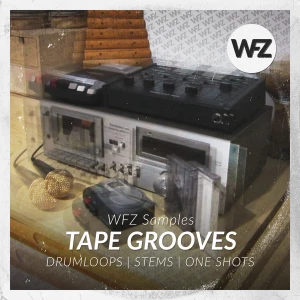
Drum One Shots
Alternatively, you may prefer to program your own loops using one-shot drums. In fact, I use the term drums lightly as quite often lofi drums will be made up of found sound. I love the fact that almost anything with an element of attack can be trimmed to create, for instance, a snare substitute. If it can be tapped, snapped or clapped then it can be used as a drum element in lofi.
You could even arm yourself with a mic and grab your own one-shots. Take a mooch around your kitchen or garden to see what lofi percussive elements you can find.
Drum Programming
When it comes to programming lofi drums using one-shots it’s all about capturing a loose groove. Riggid quantization is your enemy! I often like to extract groove templates from existing loose drum patterns. You can then apply these to your drums to give them a natural feel. In some DAWs, including Ableton, the software can take the audio of a drum break/pattern, analyse it and then write it as midi.

Another neat little trick that is used in lofi drum programming is to nudge the snare forward a bit ahead of the grid. This will give a highly swung feel. Also, why not try layering your drums? Playing drum layers in live with no quantization can help provide extra variety and groove. And as previously mentioned, have fun experimenting with a variety of ‘found’ sounds as layers. These can really give your lofi drums identity.
Approach #2: Original Composition
So, if you feel that loops and samples are a little restrictive then why not try composing your own lofi melodic elements? While having skills as a musician is certainly very helpful it’s not necessarily essential as we will discuss. It’s just as important to have a good musical ear and understanding of the lofi sound. Lofi music sits in a dusty musical landscape reeking of nostalgia. The style is laid back and jazzy in nature. Your compositions should conform to this.
As with most genres, it’s important to study and seek inspiration from other lofi tracks as well as the old recordings that inspired them. For starters, I would recommend listening to the following Jazz artists: Oscar Peterson JR, Bill Evens, Wes Montgomery and Django Reinhardt.
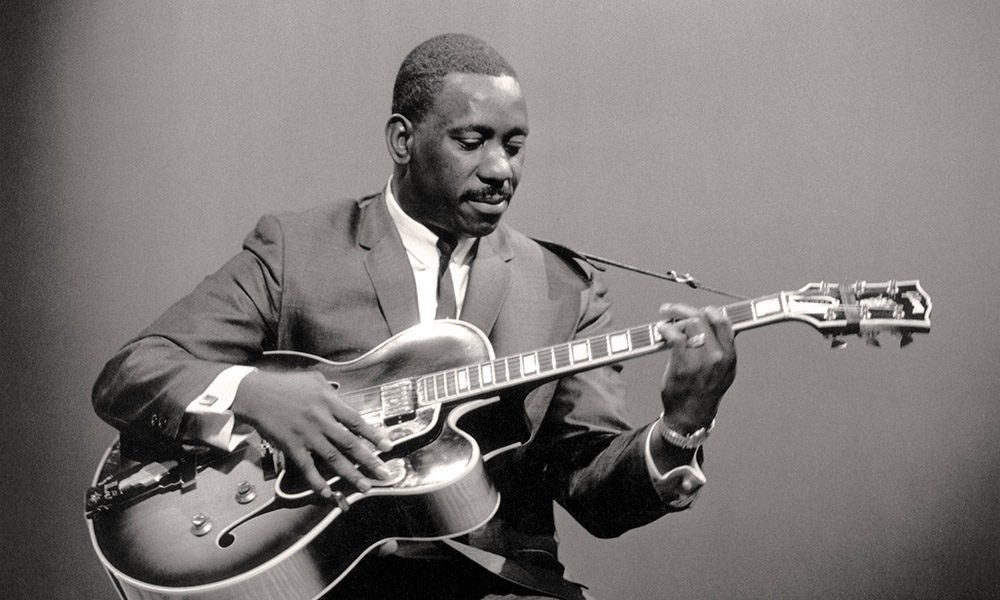
Lofi arrangements on the whole tend to be constructed around either a 2 or 4 bar chord progression. This progression is then cycled throughout the track. Additional melodies are then played over the top. The way lofi tracks are arranged in this way creates a soothing almost hypnotic state. This is why people gravitate towards lofi for studying purposes.
So spend some time coming up with a nice lush looping progression. Most lofi musicians will compose using keys or guitar. As I alluded to earlier, if you’re not particularly fluent in playing such a musical instrument there are amazing tools available to assist you.
One such tool is called Scaler 2. Scaler 2 helps you come up with a limitless variety of chord progressions in many different styles. (see video below)
You can also use midi extraction as a technique to capture chords and phrases from suitable musical sources. Obviously, you can’t just extract the midi from whole sections of copyrighted music as that would be plagiarism. You can however take selected chords and flip them to make your own arrangements. You are then free to extract the midi from your new arrangement as nobody owns the copyright on individual chords.
Getting that quintessential lofi sound
OK, so you have a beautifully emotive jazzy chord progression. You have added some smooth melodies to your arrangement. The problem is, it all sounds too clean and contemporary. This is where the right kind of audio processing can work wonders. There are several types of audio processing commonly used to achieve a lo-fi sound, including:
– Tape emulation: This processing simulates the sound of analog tape recording, adding warmth, saturation, and noise to the audio signal.
–EQ filtering: By selectively cutting certain frequencies, an EQ filter can create a lo-fi effect by removing high-end clarity or bass depth.
–Sample rate reduction: This processing reduces the sampling rate of a digital audio signal, creating aliasing and other distortions that can result in a degraded, lo-fi sound.
–Compression: This technique reduces the dynamic range of an audio signal, making the quieter parts louder and the louder parts quieter, which can create a vintage, lo-fi sound.
–Bitcrushing: This technique reduces the bit depth of a digital audio signal, creating a distorted, degraded sound reminiscent of vintage digital devices
-Wow & Flutter: This is one of the most synonymous effects associated with lofi and refers to the pitch wobbling of a source. This effect aims to emulate poorly calibrated turntables or old worn-out VHS recordings.
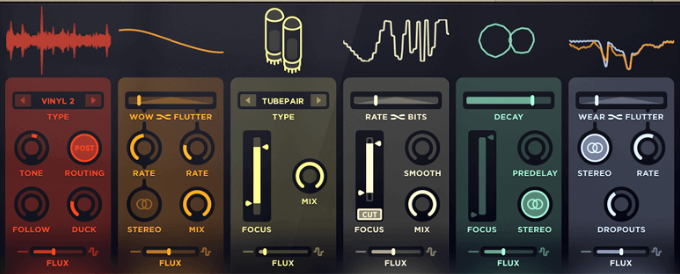
These techniques can be used in various combinations to achieve an aged vintage lo-fi sound on both live and virtual instruments. Most DAW’s have stock plugins that will cover all of these processing effects. Alternatively, the RC-20 Retro colour plugin by XLN Audio has all these audio processing tools included and more!
One final note on processing. In my experience making lofi beats, you can actually go pretty heavy-handed on these processing techniques (with the possible exception of wow and flutter) The effect you’re after is not a subtle one so don’t hold back.
Adding that final lofi sauce
Anyone who has spent any time listening to lofi will be familiar with the abundant use of ambient texture fx. The overlaying of these soundscapes provides a feeling of space and environment and is key to lofi’s appeal. Some of the most popular textures used in lofi include Vinyl crackle, bird songs, rainfall/weather-related sounds, Waves lapping, City streets, Forests and children playing.
Why not get out for an afternoon armed with a portable recording device (Yes your mobile phone does count) and grab some of your own lofi textural magic?
Think of all the fun you could have, applying these found sounds to your lofi masterpieces.
Conclusion
I hope this guide has inspired you to get busy making your own lofi beats. I have not gone into too much fine detail or covered everything, as like most music, there are hundreds of different approaches. The main thing to take into account is that you can really let your creative musical juices flow when creating lofi Hip-Hop. And it’s also a particularly liberating music form as you don’t have to labour over getting a highly polished professional ‘Big Studio’ sound.
If this article has wetted your appetite and you are tempted to dip your toe into the lofi stream then RouteNote Create is an amazing starting point. Not only do we have a plethora of amazing lofi themed packs, we also have an incredible FREE lofi sample bundle available to all new users. Check out this video for details on how to claim these free packs.
Remember – RouteNote Create subscriptions start from as little as $2.99, and you also get 10 FREE credits to spend on samples when you sign-up as well as your FREE sample packs!
